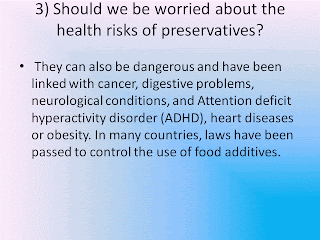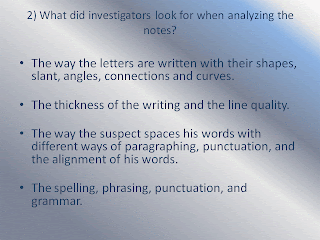Practicals 6-10 Measurements, Graph techniques and Kinetic particle theory.
1P6 Measurements of length
The important apparatus we used today were the metre ruler, vernier calipers, micrometer screw gauge. Today was a first of its kind lesson because we did some very interesting experiments with the various instruments of measurement. First, we used the meter rule and checked its smallest rule, and then we measured the hight of our seat from the floor at 4 different positions and took the average reading. Then, we conducted similar experiments with the vernier calipers and micrometer screw gauges. We were then tested on what we had learned with a few questions about what instruments we would use to measure something and were made to suggest a way to measure the diameter of a long piece of wire using only a metre rule and a uniform glass rod. Today was a very interesting lesson as i got a chance to try using these instruments for the first time and it felt fun measuring tiny measurements.



1P7 Determining density
Today, we measured the density of the density of a small glass marble.It was very interesting because until now, i had no idea what density was. It was interesting to use so many different ways to measure density of so many objects. First, I weighed the marbles and then found the volume of the marbles. I divided the weight by the volume to come up with the density of the marbles. The formula for determining density is mass/volume.

We also determined the density of irregular solids. First, we placed the object in a beaker of water and compared the new reading with the reading taken when the object was not in the water to determine the mass. After that, we used the formula to determine the density.
 1P8 Brownian motion
1P8 Brownian motion
Today, i learned about Brownian motion. I was very interested as it was a science theory i had never heard of before and i was curious to learn more. Brownian motion was discovered in 1827 and it proves that a gas consists of invisible molecules moving around constantly, randomly and at high speeds. Today's lesson was memorable because I learnt something that I mixed up with diffusion and it corrected my misunderstanding, clearing up two things in my mind.

1P9 Investigating Mixtures and Compounds
Today, we investigated the properties of a mixture and a compound. We used tripod stands, evaporating dishes, glass rods, wire gauze and Bunsen burners. First, we thought about what the difference between mixtures and compounds was and how to identify them.We heated the sulphur powder and iron filings to form a black solid. We discovered that this black solid had completely different characteristics compared to the individual elements. This was because the iron and sulphur had undergone a chemical reaction that changed its atomic structure, giving it completely different characteristics.

Then, we formed certain conclusions about chemical reactions. I concluded that heat is needed to form compounds and cannot be separated by physical methods nor have the properties of its constituent elements.
Term 2 Summary.
The topics for term 2 are Measurements, Graph techniques and Kinetic Particle Theory.
The first thing i learnt this term was what Matter was and the states of Matter. I was not particularly interested in this part as many have already learnt this in primary school. Next, we learnt about the Kinetic Particle Theory. I greatly enjoyed this part of Science term 2 because this was something completely new. At first, i had trouble seeing the difference between this theory and diffusion and how they could coexist, but in the end i managed to understand it. I learnt that the Kinetic Particle Theory states that mater is made of tiny particles, which are in constant and random motion.

Next, I learned about diffusion. In diffusion, particles move randomly from a region of high concentration to a region of lower concentration.
For, example, if a bottle of perfume is opened in one corner of a room, we can smell it in another corner after a very short time. Thus, diffusion can be proven. Bromine vapour can be used to show the diffusion of gases, Because it is brown in colour. Using this, we can see the vapour diffusion throughout the room.
I also learned about the molecular model of the three states of matter. I felt bored about this section because I had already learned this. I also learned about the changes of state in matter. That included melting, freezing and boiling. Once again, i had already learnt this.
I also learned about Elements, Compounds and mixtures. Elements are substances that cannot be broken down into simpler substances by any known chemical methods. Scientists have classified elements into a chart called he periodic table. The have columns called groups and rows called periods. Elements are grouped according to their properties. Each element is represented by a unique symbol and each element is given a number called the atomic number.
Atoms are the smallest particle of any element. Each element consists of a particular type of atoms. two or more atoms held together by chemical bonds are called molecules.In a physical change, no new substance is formed. But in a chemical change, a new substance is formed. Compounds are a substance containing two or more elements joined together by a chemical reaction. A compound has very different properties from its elements. However, in mixtures, the atoms of the elements are not chemically, combined.
I also learned about solutions and suspensions. Solutions are mixtures that consists of a solvent and a solute. Solutions are homogeneous when the colour and density, appearance and other physical and chemical properties are the same in every part of the solution. The solubility of a substance in a solvent is the maximum quantity of that substance which can dissolve in 100g of the solvent at a given temperature. (Units: g/100)
Suspensions are formed when the substance does not dissolve in the solvent or when the amount of substance present is over its solubility limit. Suspensions are cloudy and non-homogeneous.


I also learned about separation techniques, such as filtration, crystallisation, the difference between crystallisation and evaporation to dryness, magnetic attraction, distillation, fractional distillation, separating funnel and paper chromatography.



Overall, i greatly enjoyed term 2 science because I learnt what from young I had thought was chemistry was. I dealt with chemical reactions and separation techniques which were very interesting and fun, as i had never seen anything like it.




















